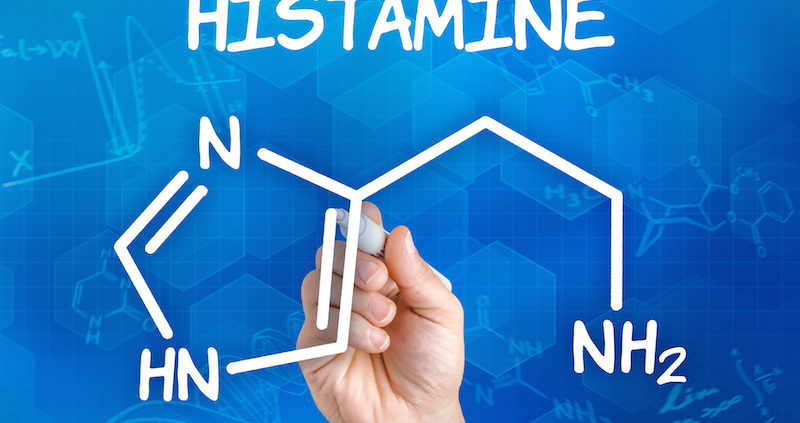Histamine Intolerance – Are You Reacting to ‘Healthy’ foods?
Occasionally I see clients not reacting as you might expect to a clean healthy nutritional protocol (containing fermented foods, meat/fish, vegetables, fruits and nuts/seeds) and sometimes their original symptoms might even be exacerbated. When this happens I always suspect ‘histamine intolerance’.
Histamine intolerance (too much histamine) can manifest itself as any number of symptoms including but not limited to skin problems, insomnia, light headedness, palpitations, low blood pressure/fainting, muscle pain/cramps, joint pain, tinnitus, depression, unexplained bruising and rosacea.
Histamine is a chemical that is secreted by specialist immune cells as a response to help protect the body against infection. A histamine response is involved in the typical symptoms that are associated with mild allergic reactions (e.g hay fever & hives) and this is why antihistamines are often used to help manage such reactions.
Histamine intolerance occurs when the body has too much histamine. This happens when the supply of histamine exceeds the ability of the body to break it down. The effect of histamine on the body is cumulative – visualise a barrel with holes in the bottom being filled up with water. The water represents histamine and the holes the enzymes that break histamine down. If the amount of water entering the barrel exceeds the amount escaping, then the barrel will eventually overflow (this is the point at which the body has too much histamine).
The irony of histamine intolerance is that the foods that you are often told to consume on a healthy plan are the very foods that contribute the greatest histamine load! These include raspberries, avocados, spinach, meat stocks, citrus fruits and fermented foods (including certain strains of probiotics). The key to balancing histamine (stopping the barrel overflowing) is to both reduce intake and support the optimal degradation of histamine. It turns out that some of us are less able to produce the enzymes required to break down histamine. An imbalanced microflora is also significant contributor to elevated histamine levels. Enzyme and histamine levels can be tested for and then an appropriate strategy implemented to help regain control of key symptoms before revisiting the careful reintroduction of healthy higher histamine foods.


 RT
RT 

Leave a Reply
Want to join the discussion?Feel free to contribute!